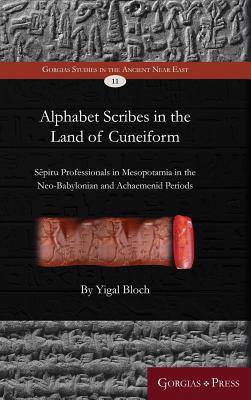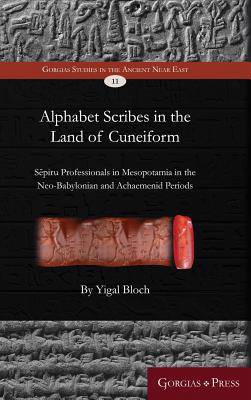
- Retrait gratuit dans votre magasin Club
- 7.000.000 titres dans notre catalogue
- Payer en toute sécurité
- Toujours un magasin près de chez vous
- Retrait gratuit dans votre magasin Club
- 7.000.000 titres dans notre catalogue
- Payer en toute sécurité
- Toujours un magasin près de chez vous
Alphabet Scribes in the Land of Cuneiform
Sēpiru Professionals in Mesopotamia in the Neo-Babylonian and Achaemenid Periods
Yigal BlochDescription
This book discusses the alphabetic scribes (sēpiru) mentioned in Mesopotamian documents of the Neo-Babylonian and Achaemenid periods - specifically, of the 6th-5th centuries bce. The period in question saw a wide diffusion of writing in the Northwest Semitic alphabetic script - mostly in Aramaic - in Mesopotamia; yet, alphabetic texts were normally written in ink on perishable materials and did not survive to be discovered by modern archaeologists. In contrast, cuneiform tablets written on clay have been found in large numbers, and they document different aspects of the alphabetic scribes' activities. This book presents evidence for understanding the Akkadian term sēpiru as a designation for an alphabetic scribe and discusses the functions of these professionals in different administrative and economic spheres. It further considers the question of the ethnic origins of the alphabetic scribes in Mesopotamia, with special attention to the participation of Judeans in Babylonia in this profession. Bloch also provides translations of over 100 cuneiform documents of economic, legal and administrative content.
Spécifications
Parties prenantes
- Auteur(s) :
- Editeur:
Contenu
- Nombre de pages :
- 514
- Langue:
- Anglais
- Collection :
- Tome:
- n° 515
Caractéristiques
- EAN:
- 9781463206352
- Date de parution :
- 07-09-18
- Format:
- Livre relié
- Format numérique:
- Genaaid
- Dimensions :
- 152 mm x 229 mm
- Poids :
- 852 g







